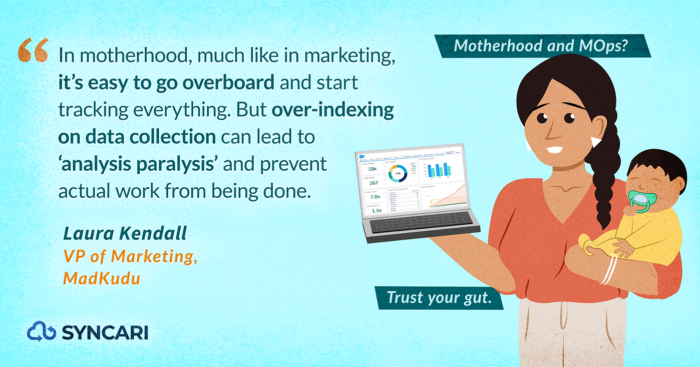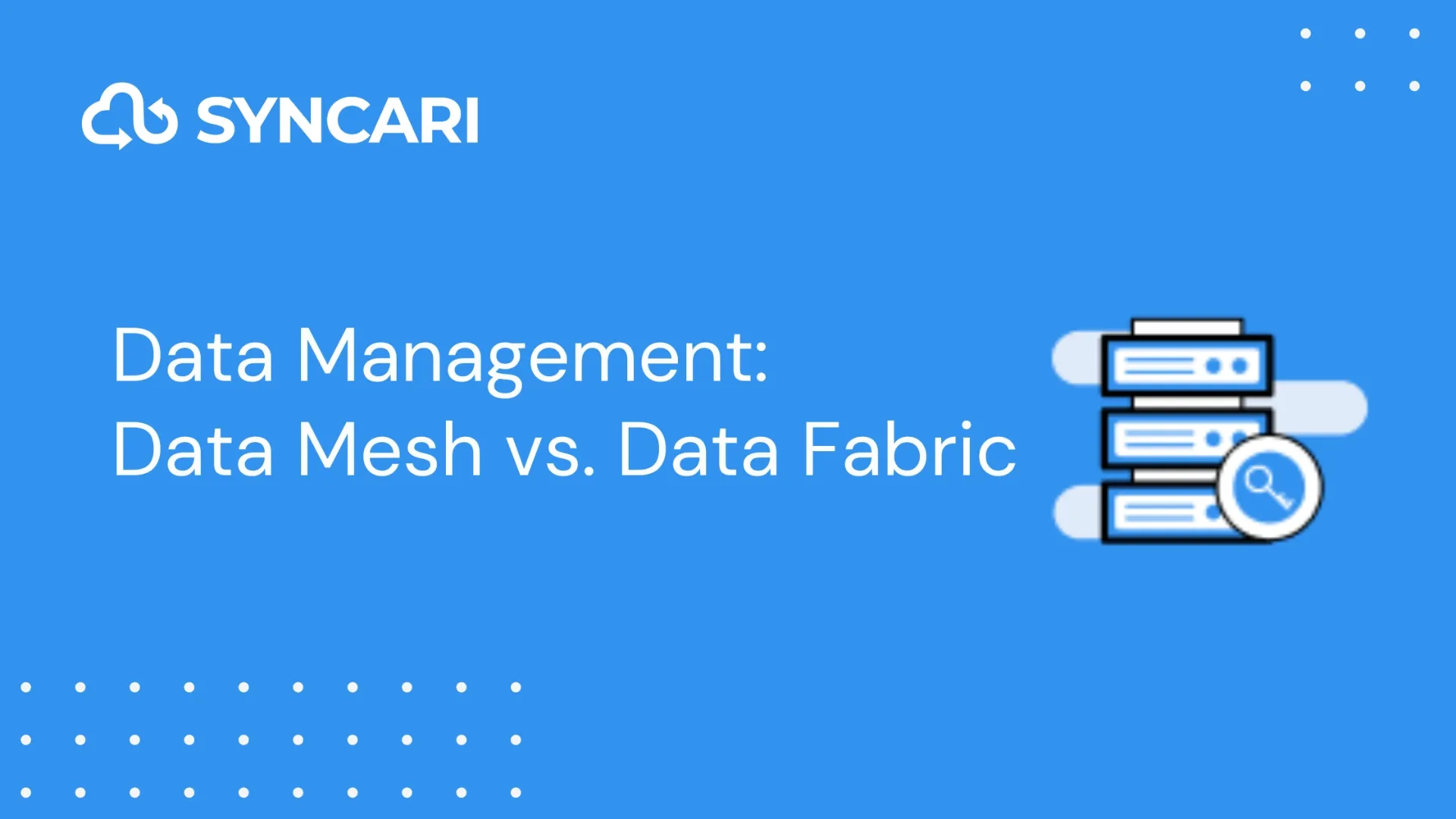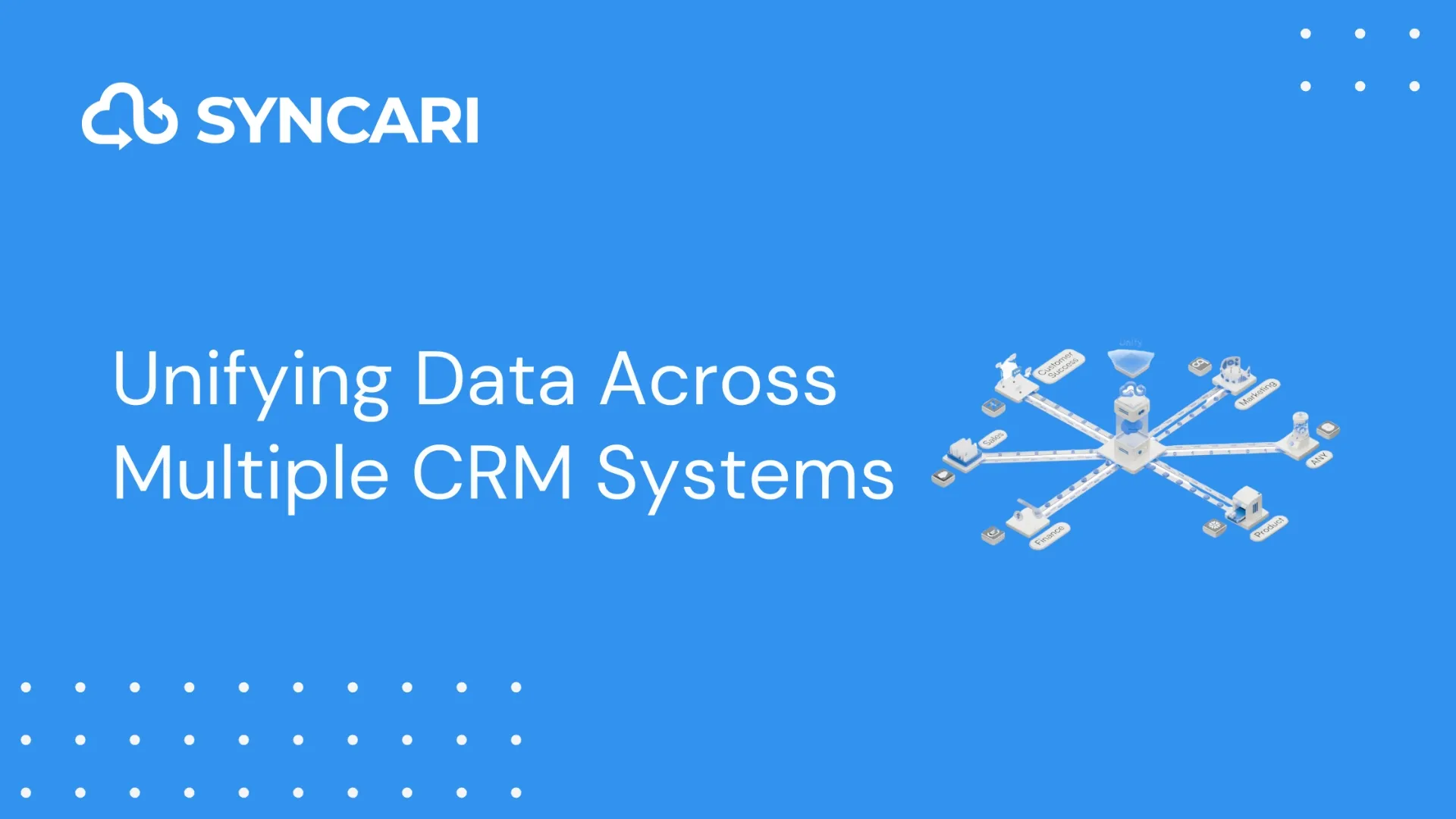Data-minded leaders don’t stop being data-minded when they’re at home. Just ask MadKudu’s VP of Marketing, Laura Kendall, who recently gave birth to a baby girl named Ivy. “As a new mom with an anxious temperament, I might have taken the data collection too far,” she admits with a laugh. “At least I didn’t export the feeding data to a .CSV to analyze the breast milk consumption trend over time. Oh wait, yes I did.”
The lesson to be learned? “In motherhood, much like in marketing, it’s easy to go overboard and start tracking everything,” she says. “But over-indexing on data collection can lead to ‘analysis paralysis’ and prevent actual work from being done.”
I sat down with Laura to learn more about how her role as a marketing leader parallels her new gig as a mom, why meticulously following click trails may be a waste of your time, and what marketing leaders can do to crack seemingly unsolvable problems.
Nick Bonfiglio: Can you share a lesson that being a mom has taught you about marketing?
Laura Kendall: The number one lesson is: Find your tribe. Or if you’re a marketer, help your customers find their tribe.
Motherhood can feel incredibly lonely, especially during a pandemic. But the tribe I found — consisting of fellow mom friends and amazingly supportive online micro-communities — eased the burden greatly. These women got me and my struggles. Even if we couldn’t physically be together, they made me feel a lot less lonely.
Similarly, building a community for your customers and prospects can also be a game-changer, not only for your brand but for the entire movement you’re a part of. While there are many benefits (like gathering insights on your audience, surfacing feature requests for your product roadmap, and generating new sales leads), perhaps the biggest reason to do it right now is to make your customers feel less lonely, especially in this digital-first world.
Tell me about the movement MadKudu is a part of.
Absolutely. We’re part of the no- or low-code movement, allowing marketers to be more technical and data-driven without having to rely on engineering resources. Effectively leveraging data is one of the biggest factors that separates today’s successful marketers from unsuccessful ones.
With more data sources and systems of record than ever before, the typical marketing team struggles to access and operationalize their data to intelligently segment, prioritize, and personalize their marketing effort without help from data engineers or data scientists. However, having these internal teams build homegrown solutions ends up being extremely time-consuming and costly to the business.
MadKudu is focused on empowering B2B marketers to quickly build, deploy, and maintain data science models themselves. Some common use cases we help our customers with include predictive lead and account scoring, identifying product-qualified leads (PQLs), and real-time qualification on digital channels.

Can you share a story of a data nightmare you’ve experienced in your career?
When I was running Marketing Ops at a past job, we undertook a large project to streamline our data processing and integrations. The good news was, I was floored at how great the company was leveraging Salesforce. Every department was actually using it, and there weren’t many processes that were outside the system.
The bad news was that everyone was allowed to use it however they wanted without any standardization. This resulted in many duplicate fields and reporting headaches.
For example, on every account, there were four fields that were used to determine geographic segmentation, but the picklist values were different for each field and they were pulled from different data sources. Professional services was using one set of regions, customer success was using another, sales and marketing were using a third.
It caused a ton of downstream issues and questions: How many resources should you allocate to each region? How do you route to the right sales rep in the right region? How do you make sure the right prospects and customers are invited to the right regional events?
The bottom line is your data and your setup is never going to be perfect. Perfection is not something to strive for. But setting yourself to be nimble when new needs arise is most important. You need a data strategy, documentation, and clean lines of communication between departments.
What’s a lesson you wish you’d learned earlier in your career?
Sometimes deep investigations just aren’t necessary. I say this having spent the last several years leading marketing at early-stage companies with a small team that is still trying to figure out product-market fit. Often in those situations, there isn’t a great baseline of data on which to make decisions.
For example, let’s say that you’re seeing a significant increase in demo requests from your website over the past month and your CEO asks you to look into what’s causing that spike. Earlier in my career, I would’ve dug really deep into the data and stressed over finding the perfect answer. I would have tried to follow the click trail of every demo requester. However, I learned that when you’re on a lean marketing team that’s short on resources and doesn’t have a dedicated Marketing Ops team or data analyst, the hours that you’ll spend trying to prove it directly is less important than connecting the spike to a reasonable explanation.
My response today would be something more like, “The spike is probably due to the website messaging updates that we did last month.” Or, “It looks like we’re also seeing an increase in website traffic. So if conversion rates remain stable, we would expect more demo requests.” Then I’d ask my sales team for their insight since I would’ve already set up a process for them to ask anyone who requests a demo how they heard about us. That data is always going to be better than spending too much time trying to follow a click trail.
What’s the right balance of gut instincts versus data?
I think it depends on the stage of the company and the business model. If you’re going after the same audience consistently quarter after quarter, it’s best to lean heavily on data. But you should weigh more heavily on intuition if you’re going after a new market segment, shifting your go-to-market strategy, or a very early-stage company.
Ultimately though, it’s not always possible to connect your hunches with data. We have to trust ourselves and our instincts, as scary as it may be. And we’re not always going to be right. But it’s important for leaders to let their teams know that’s okay.
What do you do when you’re stuck on a seemingly unsolvable problem?
When I come across challenges, I know I’m not so special that I’m the only person who has ever encountered this problem. That means it’s my job to figure out how other people have solved this problem, and then apply a similar solution. Often I have to modify and come up with a slightly new solution, but I always seek inspiration from other places when I’m stuck.
I also connect with peers outside of MadKudu when I’m solving especially tough problems. I like to think about it as building my own personal board of directors; a go-to team of people that I’ve worked with in the past or networked with. Even when I have challenges that I think I know how to solve, I still ask my peers because this market changes so fast. New solutions are always popping up; you can often find a solution that is newer and better, or quicker to implement.
How would you advise someone to start going about building their own personal board of directors?
Find good mentors. There are a lot of great communities that offer mentorship, like Women in Revenue or Pavilion (formerly Revenue Collective). If you post in these communities or post on LinkedIn asking for help, you’ll find people who are willing to help and will also probably be willing to be a resource in the future. People that you’ve worked with in the past can also be a great pool to tap. I’ve also met several people through putting myself out there at live events. There are many ways to find your tribe; the important thing is that you consciously cultivate it.
Want to learn more from Laura? Follow her on LinkedIn.


